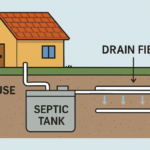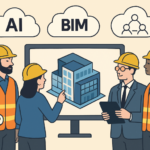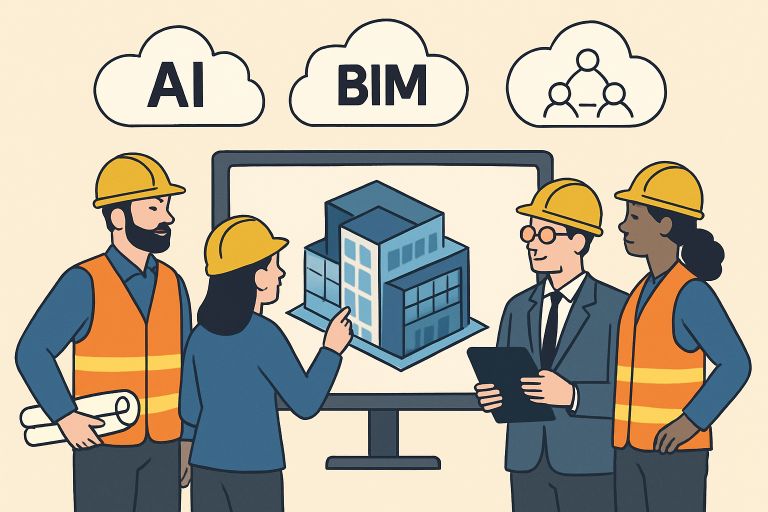Key Takeaways
- Integrating advanced technologies like AI and BIM enhances project efficiency and decision-making.
- Collaborative procurement models, such as Integrated Project Delivery (IPD), foster teamwork and shared risk.
- Proactive risk management and sustainable practices are essential for modern construction success.
Embracing Advanced Technologies
The construction industry is rapidly evolving, with complex projects demanding higher levels of coordination, efficiency, and transparency. To remain competitive, firms must integrate advanced technologies, such as AI-powered hybrid project management and Building Information Modeling (BIM). AI-based scheduling tools can accelerate project timelines and drive down costs by adapting to real-time challenges. Commercial general contractors Sacramento CA, can ensure seamless incorporation of these technologies from concept to completion. Contractors skilled in digital project management can translate technology investments into faster, less error-prone builds that deliver lasting value. BIM provides a comprehensive digital representation of a project’s physical and functional details, acting as a single source of truth for all stakeholders throughout the project lifecycle. It shares a digital environment that limits rework, reduces miscommunications, and lowers the likelihood of costly errors, which are increasingly demanded by commercial projects.
Implementing Collaborative Procurement Models
Integrated Project Delivery (IPD) is a collaborative procurement model that aligns the interests of owners, designers, and contractors in construction. It uses shared risk and rewards to foster a culture of innovation and problem-solving, encouraging continuous improvement. IPD’s framework facilitates swift consensus, benefiting all stakeholders and reducing costs. Projects implementing IPD report fewer disputes, faster delivery, and reduced costs. Greater transparency around budgets and timelines simplifies client expectations, minimizes waste, and encourages constructive problem-solving. The IPD model continues to grow across sectors.
Proactive Risk Management
Modern construction management teams are increasingly adopting data-driven monitoring platforms to improve risk management. These platforms provide real-time progress updates, enabling the identification of issues like scheduling conflicts, material delays, or regulatory changes. Cloud-based dashboards can flag deviations, allowing managers to intervene early. Comprehensive risk assessments, supported by historical data and predictive analytics, help project managers anticipate challenges and allocate resources proactively. The success of a project often depends on the speed and effectiveness of risk identification and resolution.
Adopting Sustainable Practices
Sustainability is now a core consideration in modern construction, influencing materials, incentives, and regulatory requirements globally. Teams are adopting environmentally friendly materials and energy-efficient systems and strengthening local supply chains to reduce carbon footprint and project costs. The Netherlands has demonstrated the impact of circular construction practices, reusing over 100,000 tons of materials and promoting responsible sourcing of raw materials. This approach can scale across regions and project types, paving the way for responsible construction worldwide.
Leveraging Data Analytics and AI
Data analytics and AI are revolutionizing construction risk management by analyzing project data, revealing patterns that might go unnoticed. It allows teams to predict potential hazards and take preventive action before they occur. Predictive analytics drive more accurate forecasts, leading to more confident planning, reduced rework, and reduced delays and cost overruns. As AI capabilities expand, they will unlock opportunities for deeper optimization and performance analysis across construction portfolios.
Utilizing Drones for Site Monitoring
Drones are evolving from a novelty to a core operational technology on job sites worldwide. They provide real-time aerial imagery, enabling project managers to spot risks like safety hazards and workflow bottlenecks. Drones also reduce the need for manual inspections, saving resources in large-scale or remote projects. Their high-resolution mapping improves progress tracking accuracy and resource allocation. They also offer visual documentation at milestones, supporting quality assurance, reducing disputes, and streamlining reporting for clients and regulators.
Enhancing Communication with Collaboration Platforms
Digital collaboration platforms have evolved beyond document sharing to centralize communication, manage documentation, and keep stakeholders informed in real time. They offer features like instant messaging, live dashboards, and integrated approval workflows, ensuring swift answers and full context in decisions. These platforms reduce misunderstandings, streamline approvals, and align everyone with project goals and deadlines. They provide project managers with the agility to respond quickly to dynamic construction environments. By making information accessible and transparent, collaboration tools cultivate trust and keep complex projects running smoothly, even when teams are distributed across distances or multiple organizations.
Conclusion
Tackling complex construction projects requires a progressive and holistic management approach that keeps pace with the sector’s fast-moving innovations. By embracing advanced technologies, adopting collaborative procurement models, proactively managing risk, and embedding sustainability into every decision, project leaders can position their teams for streamlined delivery and superior results. The future of construction will belong to those who combine innovation with practical, teamwork-driven strategies, transforming challenges into opportunities for long-term success.










